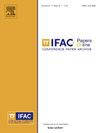State space representations of the Roesser type for convolutional layers
Q3 Engineering
引用次数: 0
Abstract
From the perspective of control theory, convolutional layers (of neural networks) are 2-D (or N-D) linear time-invariant dynamical systems. The usual representation of convolutional layers by the convolution kernel corresponds to the representation of a dynamical system by its impulse response. However, many analysis tools from control theory, e.g., involving linear matrix inequalities, require a state space representation. For this reason, we explicitly provide a state space representation of the Roesser type for 2-D convolutional layers with cinr1 + coutr2 states, where cin/cout is the number of input/output channels of the layer and r1/r2 characterizes the width/length of the convolution kernel. This representation is shown to be minimal for cin = cout. We further construct state space representations for dilated, strided, and N-D convolutions.
卷积层的罗塞型状态空间表示法
从控制理论的角度来看,(神经网络的)卷积层是二维(或 N-D)线性时变动态系统。卷积层通常用卷积核来表示,相当于用脉冲响应来表示动态系统。然而,控制理论中的许多分析工具,例如涉及线性矩阵不等式的分析工具,都需要状态空间表示。因此,我们明确地为具有 cinr1 + coutr2 状态的二维卷积层提供了一种 Roesser 类型的状态空间表示法,其中 cin/cout 是卷积层的输入/输出通道数,r1/r2 表示卷积核的宽度/长度。在 cin = cout 的情况下,这种表示法是最小的。我们还进一步构建了扩张卷积、分层卷积和 N-D 卷积的状态空间表示法。
本文章由计算机程序翻译,如有差异,请以英文原文为准。
求助全文
约1分钟内获得全文
求助全文
来源期刊

IFAC-PapersOnLine
Engineering-Control and Systems Engineering
CiteScore
1.70
自引率
0.00%
发文量
1122
期刊介绍:
All papers from IFAC meetings are published, in partnership with Elsevier, the IFAC Publisher, in theIFAC-PapersOnLine proceedings series hosted at the ScienceDirect web service. This series includes papers previously published in the IFAC website.The main features of the IFAC-PapersOnLine series are: -Online archive including papers from IFAC Symposia, Congresses, Conferences, and most Workshops. -All papers accepted at the meeting are published in PDF format - searchable and citable. -All papers published on the web site can be cited using the IFAC PapersOnLine ISSN and the individual paper DOI (Digital Object Identifier). The site is Open Access in nature - no charge is made to individuals for reading or downloading. Copyright of all papers belongs to IFAC and must be referenced if derivative journal papers are produced from the conference papers. All papers published in IFAC-PapersOnLine have undergone a peer review selection process according to the IFAC rules.
 求助内容:
求助内容: 应助结果提醒方式:
应助结果提醒方式:


